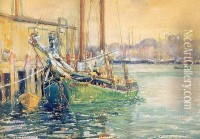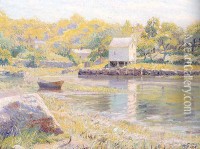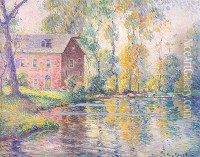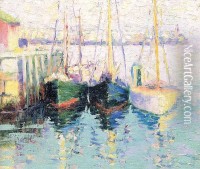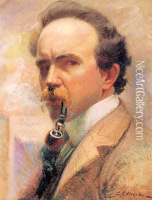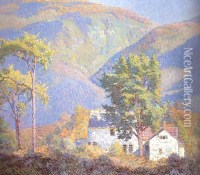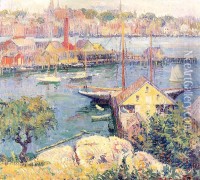Ferenc Martyn Paintings
Ferenc Martyn was a prominent Hungarian artist, born on December 22, 1899, in Pécs, Hungary. His artistic journey is notable for its diverse range of styles and mediums, including painting, sculpture, and graphic art. Martyn's career spanned much of the 20th century, a period marked by significant upheavals and transformations in the art world. Despite the turbulent times, he managed to carve out a unique artistic identity that resonated with both Hungarian and international audiences.
After completing his initial studies in Hungary, Martyn expanded his artistic education abroad, which was a common practice among European artists seeking to immerse themselves in the broader currents of modern art. His travels and studies in countries like Italy and France exposed him to a variety of artistic movements and techniques, which he skillfully integrated into his own work. Throughout the 1920s and 1930s, Martyn's style evolved, reflecting influences from Expressionism, Cubism, and the Bauhaus movement, yet he never fully subscribed to a single artistic doctrine. This eclectic approach became a hallmark of his work, allowing him to explore a wide array of themes and techniques.
Martyn was also a founding member of the European School (Európai Iskola) in 1945, a collective of artists and intellectuals in Hungary that sought to re-establish connections with the broader European artistic avant-garde after the isolation of World War II. This group played a pivotal role in reintroducing modernist trends to Hungarian art, advocating for a synthesis of traditional craftsmanship and contemporary artistic expressions. Martyn's involvement with the European School underscored his commitment to the progressive ideals of art, emphasizing its role in society's intellectual and cultural development.
Throughout his career, Ferenc Martyn received numerous accolades for his contributions to art. His works were exhibited widely in Hungary and internationally, securing his reputation as a significant figure in 20th-century art. Martyn's legacy is preserved through his prolific output and the influence he had on subsequent generations of artists. He continued to create and exhibit his work until his death on October 5, 1986, in Pécs. Today, Martyn's art is celebrated for its innovative approach and its ability to encapsulate the complexities of the human condition and the evolving landscape of the 20th century.

